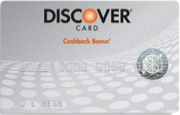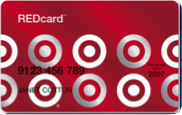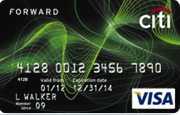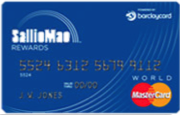Credit is one of the most unknown topics towards a college student; not realizing it would affect their entire future. Most of my friends have this common idea that if they open a credit card, that they’ll spend uncontrollably which I agree is true since it’s basically free money to spend and not realizing you have to look at how much you owe until the end of the month. And this leads them to consider not opening any credit cards at all. This I consider is a terrible decision to make right off the bat since most don’t realize that a credit history is needed if you want to borrow money for something such as a car loan or home mortgage long into the future. Paying utility bills and such in your own name might give you a history but having a high income with no credit history is not going to get any decent size credit limit one might expect, for example $500 to start.
Therefore, I try to make a point to everyone I know to open a credit card if they don’t have one, especially if they’re in college. Being in college gives you one of the best perks to open a credit card from some of these reasons I believe credit card companies look at:
- You will have plenty of expenses to pay in college
- They want to start a relationship with you to make money off of you in the future
- You have parents that are willing to pay off your debt
- You are more likely to find a well paying job in the future.
Some of these reasons seem pretty terrible from any standpoint but what happens when you’re out of college? The first point is disappears since they won’t know how you will spend and can’t predict the second point as well. The third point is less likely as you get older cause who would be willing to ask their parents when they also have student loans under their heads.
The fourth point is the trickiest part where as you could either have no job, have a low or decent paying job, or high paying job. With no job, no one will give you any credit to borrow since you have no way to pay for it. On the other hand with a high paying job, you have a shitload of money but there’s little or no history of how you will spend so it’s more risky for credit card companies to give you credit either and you might go crazy spending them in debt. Intuition would say that having a high paying job would be less risky but I believe those that earn a low or decent paying job would be the most likely to get credit. Why would someone who makes less money than a high paying job be more trusting with credit? Considering all the scenarios with no credit history, those with low or decent income will at least have some boundaries towards their spending since most people are squeezed pinched every dollar. This makes you less likely to spend crazy and lower risk to credit card companies. Also since you’re less likely to spend crazy, credit card companies are making a bet that you will carry a decent sized balance on their credit card so they can make money off of the interest on those balances. Having a high paying job pretty much kills the last point since you can pay it all in full and they won’t make as much money from you. It’s a disillusioned argument but credit cards companies are in the business to make money and the interest on carrying balances are where they make the most money.
Now myself carrying 12 credit cards seems pretty crazy and overkill in anyone’s minds. The first thing people would think is that I spend excessively crazy and in lots of debt. Contrary to that, I’m mostly in full control of my spending (except with the occasional splurge shopping I have once in a while.) Each and every one of the cards has a certain use to me because of their cashback rewards. If you know me well enough, I like to swipe most of the time and take your cash instead just for this reason. In keeping the cash, there are two choices I can make: use it for cash myself now or put it in the bank to pay off the balance later. Fortunately I usually have a problem with not having cash on myself since I keep everything in the bank and so I budget myself with some cash for on the go and deposit everything else in the bank. And I pay off all the balances in full on each credit card before their end dates.
My Credit Portfolio
Listing every credit card I have, my reasons for keeping it, and possibly why you should get this card:
1. (Old) BofA BankAmericard® Cash RewardsTM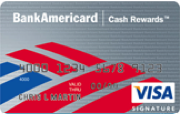
- Oldest trade line on credit history
- 3% gas & 2% groceries up to$1,500 and 1% everything else cashback
- No Annual Fee
- ShopSafe® to get virtual credit card numbers for shopping online
(New) BofABankAmericard® Better Balance RewardsTM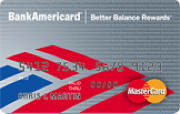
- Earn $25 each quarter for paying more than minimum and bills on time
- Get $5 bonus each quarter for having at least one banking account with BofA
- No Annual Fee
- ShopSafe® to get virtual credit card numbers for shopping online
I converted my old BofA to a new one because I had enough credit cards that provided me with better cashback and the new card would allow me to earn more money by using it on purchases each month. By spending at east $25 each month or $100 a quarter, I would obtain $30 each quarter which is at most 30% cashback! In converting the card with BofA, I get to keep this credit card as my oldest trade line and not get a hard credit inquiry.
2. Costco American Express TrueEarnings® Card (American Express Info)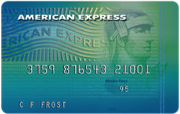
- Can be used at all Costco locations especially at their gas stations
- 3% gas up to $4,000, 2% restaurants and travel, 1% on everything else
- No Annual Fee (except the cost of Costco membership)
- 90 day Purchase Protection for stolen or accidentally damaged items up to $1,000 each
- Extended Warranty by doubling up to 1 year
- Travel Accident Insurance, Global Assist Hotline, & Travelers Cheques for traveling abroad
- Roadside Assistance, Car Rental Loss & Damage Insurance
As an American Express card, this gives one of the best customer service and benefits when I need it. I’ve never used any of the extra card benefits but knowing that I have them gives me a peace of mind whenever I travel. The cashback comes in the mail as a check once each year but can only be redeemed at Costco. Whenever I saw the check, I always believed I had to use it but after finding out that I could redeem it as cash in Costco, I take all the cash cause I’d rather spend at Costco with the credit card for the next cashback.
- 5% cashback for different categories each quarter up to $1,500 spending
- 1% cashback on everything else except the first $3,000 with .25% cashback
- ShopDiscover Program which gives 5%, 10%, 15% or more on different online retailers
- Random cashback programs on special dates such as 2% or some specific merchant
- Send money to friends through PayPal and counts as a purchase up to $400 a month
- Withdraw cash at checkout at some stores and also counts as a purchase
- No Foreign Transaction Fee & No Annual Fee
- 90 day Purchase Protection($500) and up to 1 year Extended Warranty (same as Amex)
- 90 day Price Protection($500) which refunds the price difference after finding the same item at a lower price
- Create Secure Account Numbers which is similar to BofA’s ShopSafe® by giving a virtual credit card number
- 90 Return Guarantee for any purchase up to $500
- 24/7 Travel Assistance, Flight Accident Insurance, Auto Rental Insurance, & Emergency Roadside Assistance
- Baggage Delay Insurance where up to $500 in travel replacement items are reimbursed
(New) Discover IT Card
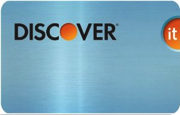
Exact same benefits but the following:
- 1% cashback on all purchases without the $3000 .25% cashback spending requirement
- Able to make a payment until Midnight Eastern Time
- No late fee for first late payment
I applied for the Discover More Card a year ago and changed to the Discover IT card this year when they revamped their cards since the benefits were a little better and nothing else would change with no hassle. The Discover Card is probably the most useful card for anybody wanting to go shopping especially during the winter holidays when they give 5% cashback on retail and online shopping. They also increase some of their ShopDiscover cashback during that time too and redeeming the Discover cashback has many giftcards that give you more than what you earned i.e. $45 for a $50 to Sephora. This is probably the best shopping card one should have especially if you do plenty of online shopping like I do.
 4. Chase Amazon.com Rewards Visa® Card
4. Chase Amazon.com Rewards Visa® Card
- 3 Points on Amazon
- 2 Points on gas stations, restaurants, drug stores, and office supply stores
- 1 Point on all other purchases
- $30 Amazon giftcard after first purchase
This card doesn’t really have much benefits except the points on Amazon purchases. The points are the exact same as % cashback with 1 point equal to 1 cent. I used to use this for many Amazon purchases and the 2 points for others before getting the cards below. Ideally, I kept this card to keep my average age of accounts longer in the future and using it sparingly.
- 5% off all Target purchases
- Free online shipping
If you shop at Target as much as I do, you should get this card only if you have a good credit history. Otherwise, get the debit version so Target can track your spending and you could one day get a high limit on the credit card version. Target credit cards are one of the most stingy in credit lines so you’ll get a very low limit if you apply for it outright. There’s always exceptions and luckily I am one of them. I share this card with my girlfriend by adding her as an Authorized User. In any matter, you should NEVER add someone as an authorized user to one of your cards unless you can trust that they won’t go crazy on spending and max out on it. As the primary cardholder, I’m responsible for all charges made on the card and the authorized user has no responsibility whatsoever. Otherwise, this card would be great for a household if you get a high credit limit. I just wouldn’t use it on big ticket items and instead use on cards with purchase benefits.
- 5 ThankYou Points per $1 at restaurants (including fast food), bookstores (includes Amazon.com), music stores, video movie rental stores (Netflix), and movie theaters & 1 ThankYou Point per $1 for all else
- 1,000 bonus points sign up with Paperless statements and 100 points each billing period under the credit limit.
- Choose when your payment due date during any time of the month.
- Virtual Account Numbers for online shopping and similar to ShopSafe®
- 90 day Purchase Protection($500) and up to 1 year Extended Warranty (same as Amex & Discover)
- Citi® Price Rewind which is similar to Discover Price Protection but must be at least $25 difference
- Automatic Travel Accident Insurance & Auto Rental Insurance
- Cellular Telephone Protection where you get a replacement cell phone when your current cell phone is damage or stolen if you pay your monthly cell phone bills on this card
- No Annual Fee
This card I consider my holy grail of all my credit cards because I shop at Amazon too frequently. With 5 ThankYou Points for every dollar on Amazon, I get a hefty amount of points that I can redeem. The other purchase benefits are just as good and the bonus points on paying on time make this card very rewarding. It’s geared toward college students like me but only the student version remains now. I applied for the regular version which included 10,000 bonus points after spending $650 but they removed that one and left only the student version. It’s still a good card to obtain if you’re still in college and shop on Amazon frequently. The ThankYou Points have bad redemption values on many items but the best I would probably be able to redeem them for is towards paying off my students loans for a 1 point to 1 cent ratio.
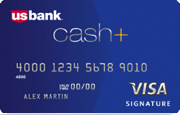 7. U.S. Bank Cash+TM Visa Signature® Card
7. U.S. Bank Cash+TM Visa Signature® Card
- 5% cashback on two categories you choose
- 2% cashback on either gas, groceries, or drug stores
- 1% cashback on everything else
- Travel Accident Insurance
- Free Experian® Credit Score
- No Annual Fee
- Visa Signature® Card benefits!
This is probably the most high end card I have at my disposal. Visa Signature cards are Visa credit cards that are over $5K credit limit and come with Concierge Service along with many other benefits that American Express and Discover offers with any of their cards. Being able to choose which categories to use at each quarter lets me choose categories that I’m missing from other cashback cards I have. I got this card when they included bill payments as one of the categories but have since removed it and replaced it since many people like me got this card for the bill payments. Even though bill payments is gone, this is still a great card for cashback. Getting this card requires you to reach the $5K threshold credit limit but if you don’t qualify, you get the U.S. Bank Rewards Visa Platinum Card which doesn’t have the 5% and 2% bonus rewards. You also have to apply at a branch now instead of online which was allowed in the past.
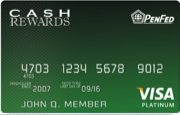 8. PenFed Platinum Cash Rewards Visa® Card
8. PenFed Platinum Cash Rewards Visa® Card
- 5% cashback on gas paid at the pump & 0.25% cashback on everything else
- No Annual Fee
- No Foreign Transaction Fee
- Automobile Rental Insurance
- PIN & Chip card
I joined PenFed Credit Union to start a banking relationship with them but I didn’t know that they pulled a hard inquiry until after I had done it. Luckily, I found out that this hard inquiry would be used for any credit application applied within 90 days. I considered either getting a refinanced low interest auto loan that they’re highly well known for or a credit card that I’ve been interested for a long time. In the end, I decided the credit card was a more suitable choice in the long term and was surprised at being approved with card since PenFed is supposedly one of the most stringent credit issuers. As anyone can tell from the first benefit, the gas cashback is the most beneficial when you drive everywhere. When I applied for this card, I didn’t realize there was an upgraded version of this card or the PenFed Platinum Rewards Visa® Card. I might consider upgrading one day because it would be a great card to use internationally with better rewards on that card. The PIN & Chip feature would make traveling through Europe less problematic and no foreign transaction fee makes it even more attractive. If you’re tempted to bank with one of the most beneficial credit union, PenFed is a great place to try.
9 & 10. Chase Freedom® Credit Card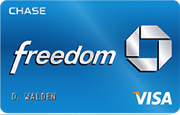
- 5% cashback for different categories each quarter up to $1,500 spending & 1% cashback all else
- BLUEPRINT® allows you to calculate how to pay for your purchases
- $100 Cash Back in UR points after spending $500 in 3 months
- No Annual Fee
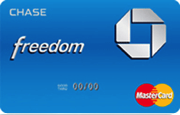
I have the Chase Freedom in both the MasterCard and Visa versions. I put the links for the separate credit applications for different versions on the pictures. The Visa version is what everyone applies for on the website and usually anywhere else. The MasterCard version is much harder to find unless you Google for it or head to the MasterCard website. After reading through most forums about Chase sign-up bonuses, I’ve learned that Chase heavily uses sign-up bonuses and there’s a certain group of people called churners that reapply for credit cards for bonuses which is especially prevalent for most Chase credit cards. As enticing as this would be, I decided that churning cards is not my thing and would rather look at the long term picture of what I would use these credit cards for. My long term goal is to obtain the Chase Sapphire Preferred Rewards Card so I can transfer my Freedom UR points to this card and use it for travel in the future. Having two Chase Freedom cards also means I have two sign-up bonuses to reach although $100 Cash Back is considered low in comparison with Chase’s past offers of $200-300. The 5% cashback for different categories is one of the key features that I’ve been wanting to get for so long and finally have now to complement my cards. If you want both try applying at the same time to increase the possibility that you have two hard inquiries counting as one on the same day; the first application would probably be accepted while the second application would be a pending review.
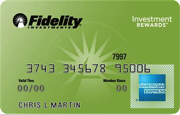 11. Fidelity® Investment Rewards American Express Card
11. Fidelity® Investment Rewards American Express Card
- 2% cashback on all purchases
- Retail Purchase Protection
- Travel & Emergency Assistance including Car Rental Loss and Damage Insurance
- No Annual Fee
Getting this card took several phone calls after learning of a credit denial. The reasoning for the denial was that I was a college student and they would allow only one credit product with this credit issuer. This credit card is issued by FIA Card Services which is owned by Bank of America and hence why I already have a credit product. Fortunately since I’ve been a long customer in good standing, they reconsidered and approved this card. This credit card might be weird to get considering that I have plenty of 5% cashback credit cards, but I wanted a credit card that gave me 2% for any random purchases I had that would not qualify for the other cashbacks. The cashback would also be put into my Fidelity account for future investments when the time comes.
12. Sallie Mae® World MasterCard
- 5% cashback on gas and groceries up to $250, respectively per month
- 5% cashback on textbooks up to $750 per month
- 1% cashback on everything else
- No Annual Fee
- $25 first-time use bonus
- World MasterCard benefits (i.e. similar to Visa Signature)
The Sallie Mae® World MasterCard is probably one of the best cards to use for college students in my opinion. Who is going to spend more than $250 a month on those categories as a college student in the first place? But the World MasterCard label is only for credit limits higher than $5K and have almost the same benefits as Visa Signature. If you don’t get the World MasterCard version, you’ll be considered for the Platinum version which doesn’t have as much benefits. Although this card is geared toward college students, I think this is a terrible card for those who can’t control their spending and build large balances since the fees are set to be similar to regular credit cards and not college students who would probably miss something once in a while. I plan to use this card for groceries and textbooks. I’ve also read online that Target and Walmart counts towards the 5% to groceries which is very broad but as a college student, any cashback is better than nothing.
What’s the point of showing these cards?
After reading through all of those cards, what’s the point of it showing you my card portfolio? I’m giving you several great choices of credit cards you should try and consider opening depending on your needs. My needs are all over the place but you might find something you specifically want, either now or in the future. Cashback or travel rewards? Will you be able to pay off the credit card balance in full or pay the minimum month to month? These are considerations you must think about before applying for any credit card.
Another consideration is how likely would you be approved? No credit history? Go to the bank you use and apply for one of their credit cards. Although you might not have any credit history, the bank will be able to look up all the bank accounts you have with them and make a decision to allow you to build credit with them. The credit limit might be low (usually less than $1K) but use it from time to time and your credit card issuer will give a credit limit increase automatically in the near future. Know that each credit card issuers have different criteria when deciding how much they’re willing to lend you credit. One might give you $3K right off that bat while another might be more conservative and give you just $300. Everyone has different circumstances but it never hurts to try. The first credit card is the most daunting but having at least one will be the start of a credit history for you.
Going back to which credit card to choose; if you know that you won’t be able to pay in full every month, you should find a credit card that has a 0% APR. This gives you leeway to spend on what you need without having to pay outrageously high interest on that debt. Also just because it says 0% APR doesn’t mean that you don’t pay the minimum each month, it means that you will pay the minimum each month to keep that 0% APR.
If you’re an authorized user for a credit card from your parents, you are very lucky since you’ve been piggybacking on their credit and you could get a card of your own without any problems with the exception of income. Having any sort of income will largely decide your approval or denial as a college student. The credit cards I have above can be considered as Prime credit cards where a credit score of 700+ is usual for approval. You’re not guaranteed to get a Prime credit card until you gained a decent credit history with on time payments. By guaranteed, I don’t mean you will get it no matter what but meaning that considering everything else you do is similar to the average person, an approval is the most likely answer. Subprime credit cards are usually those that don’t have much if any benefits but are around to allow you to build credit or rebuild if you have a problem in your credit history.
There’s also credit cards that have a student and regular version. If you’re starting out on the first credit card, the student version is probably the best choice since the requirements are lower than the regular version. A regular version is typically a Prime credit card and there’s differences in benefits with both depending on the credit card issuer (i.e. no sign-up bonus on the student version). Even when applying for the regular version, there might be a section that asks if you’re a student and to fill out what school you attend. From my experience although I might have been approved for a Prime credit card, I am still a college student in their system and this limits how much I can grow in my credit relationship with them. As such, there are always exceptions so don’t ever give up!
Now if you already have a credit card in your own name, that’s great you’ve already started. If you’re carrying a balance on this card though, I recommend you should never consider transferring balances because you spend more money to transfer the balance which usually is 3% and this would be similar to the interest accuring from having a balance. Another point that you should pay attention to is credit utilization or how much you have on the credit card balance vs the credit limit. Normally, spending 5%-15% of your credit limit makes your credit score higher since you’re not spending crazy. Just make sure that the balance at the end of your billing period is around those percentages in credit utilization because whatever balance you have at the end of the billing period is usually reported to the credit bureaus. You can always pay for than the current balance in order to lower recent transactions you’ve made. This would be the best action for those with tiny credit limits i.e. $300. By doing this, you will be setting yourself up for a credit card approval or other credit products in the future.
Another advice to consider when applying for a new credit card is to apply for a credit card that isn’t associated with the one you currently have. For the credit card issuer you currently have, whatever credit limit you have is probably the highest limit they’re willing to offer and anymore is too risky for them. Therefore, the chances of getting a new card with them is probably lower than if you applied to another credit card issuer. To a different credit card issuer, they see you as a future potential customer to steal business from the one you currently have. Depending on how they calculate credit limits, you might be offered a credit limit equal or even higher than the one you currently have since you’ve proven you can handle the amount of credit given previously and they want to impress you as a better credit card to use instead.
Now on the other end where you have a high balance with a credit utilization of over 60%, I would not apply for any new cards until those balances are brought down to controllable levels. Who in the right mind would approve a credit application for someone that is close to maxing out their limits? This might contradict what I had said earlier about credit card issuers making money off of interest fees and another credit issuer might make more money off of you if they accepted your credit application. There’s always the risk where you already have debt and adding more might spiral out of control, the credit card issuer that gave the new credit card loses money while the first credit card issuer that held your balance before is free from dealing with this mess. Therefore, it isn’t worth it to get a new credit card with high balances until you’ve paid most of it off. Credit utilization is one of the most important factors that everyone should pay attention to in the short term.
I’ll admit I went overboard somewhat with this many credit cards but I am able to manage them. But in my opinion, two or three credit cards is plenty enough for any average person. Anymore than that, you should better be able to micromanage all your accounts. My reasoning in opening many credit cards is to build a long Average Age of Accounts (AAoA) in the future. Having this many credit cards would hurt my current credit but within time, adding more credit products into my arsenal during the future would not dent the AAoA as much as it would if I had only 2 or 3 accounts. This might be terrible in the future if I was ever to consider a home mortgage with this many accounts but I don’t expect to see a home mortgage in my name happening until at least another decade.
The Average Age of Accounts or AAoA is probably one of the most important factors to consider in the long term. This shows anybody that your borrowing money from how long you’ve been borrowing and this shows you’ve been capable of using credit wisely. That’s why starting early is especially important and the best time is right in college (although piggybacking off your parents since childhood would make this even better for you). From my understanding of AAoA, it’s the sum in length of all the tradelines you have in months divided by the number of tradelines you have. From my standpoint, I’m hoping that in the future when I need to apply for new credit, this factor won’t be adversely affected if I have 2-3 accounts.
|
Two people who open # of credit cards |
Total months in 20 years keeping the same cards (# of accounts * 12 months * 20 years) |
Total months after opening a new credit card in 20 years (add one month for new account) |
Average Age of Accounts after new credit card (months in a year * # of accounts including new account) |
|
12 credit cards |
2880 months |
2881 months |
2881/(12*13) = 18.468 years |
|
3 credit cards |
720 months |
721 months |
721/(12*4) = 15 years |
Above is a hypothetical scenario about AAoA between two people keeping credit cards for 20 years: one with 12 credit cards and another with 3 credit cards. As you can see above, having 3 credit cards gives a more drastic change of 5 years versus having 12 credit cards with a change of 1.5 years if I opened a new credit card. The key point is to keep the oldest credit card you have and don’t close it!
But if you don’t really care about your credit history as much and want to use it for benefits now, there’s always Credit Churning which I won’t go into detail. Credit Churning is basically using your credit to get as much sign-up bonuses as possible (but these sign-up bonuses have high spending requirements). Some people have successfully done this carefully without any risks but there are some who’ve been blacklisted from those banks and is not something I recommend to attempt (I would highly discourage this risky business). But it’s your life so the choice is yours to choose what you want to do with your credit. The longer you wait to obtain a credit card, the harder it gets to borrow money in the future. So find the one credit card that fits your spending preferences and apply for one!
A last note I should make if you ever get denied from a credit card. There’s always hope to get your credit application reconsidered! The first thing you should do is call the credit card issuer’s reconsideration line. Google is your best friend to find those numbers but HERE has a list of numbers and great tips on what to do. Don’t be afraid to make the call; many never do because they hate talking to customer service representatives after experiences with other companies. It won’t hurt you so call them (during business hours)! Be nice and understanding to the credit analysts (who have the power to change your application) but if they can’t give it to you, ask if you can use the application you have for a different credit card they have that isn’t as great but good enough to turn your frown upside down! If the first call doesn’t work, try again at a later time. But if nothing works, ask them what you need to do so that you can one day obtain their good graces and give that stamp of approval on your future credit card application. Every credit card issuer is different in what they consider so find out what will make you their best applicant and become a more financially educated person for your future.
How do I manage all these cards?
 With all these cards, wouldn’t I be spreading myself thin trying to manage all these cards and rewards? One of the best apps that I’ve used to manage my money and credit cards has been Pageonce.com which updates me with all bills and payments due along with any bank account balances.
With all these cards, wouldn’t I be spreading myself thin trying to manage all these cards and rewards? One of the best apps that I’ve used to manage my money and credit cards has been Pageonce.com which updates me with all bills and payments due along with any bank account balances.
![]() Another app I use to keep track of current cashback bonus is Wallaby app on my phone. This app tells me which card has the most cashback on most merchants. They’re still improving the app but it is still very useful to consider.
Another app I use to keep track of current cashback bonus is Wallaby app on my phone. This app tells me which card has the most cashback on most merchants. They’re still improving the app but it is still very useful to consider.
There’s also plenty of other resources to help with finances and credit such as mint.com, Personal Capital, Credit Karma, Credit Sesame, and much more online. I’ll probably get to these things later.
